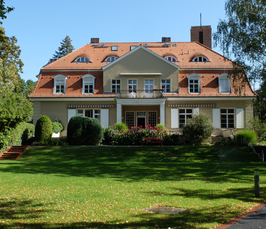Blending Old Concepts with Data-driven Approaches to Discover and Classify Homogeneous Catalysts
- TH Department Online Seminar
- Datum: 06.05.2021
- Uhrzeit: 16:00 - 17:00
- Vortragende(r): Professor Clémence Corminboeuf
- Laboratory for Computational Molecular Design, Institute of Chemical Sciences and Engineering, Ecole Polytechnique Fédérale de Lausanne (EPFL), Lausanne, Switzerland
- Ort: https://tum-conf.zoom.us/j/62130928408
- Raum: Meeting ID: 621 3092 8408 | Passcode: 986471
- Gastgeber: TH Department

Recently, we have elaborated a computational toolkit[5] based on Sabatier's principle that facilitates the identification of overarching trends present in the “catalysis space” and provides new insights in the best places to “look” for homogeneous catalysts having high activity. For a given reaction, we can identify prospective species anticipated to exhibit enhanced activity and construct accompanying design principles that should be useful for synthetic chemists. The combination of these tools with supervised machine-learning techniques enable us to expand the pool of examined catalysts to over 105 species. The large quantity of data generated can be compiled and mined into an interactive tool, which facilitates the analysis and assists in identifying the most compatible metal/ligand family combinations with the goal of establishing relationships between the intrinsic chemical properties of different catalysts and their overall catalytic performance. We focus on both prototypical classes reactions and challenging organic processes and highlight some of the pro and cons of the overall approach.
[1] P. Sabatier, Ber. Dtsch. Chem. Ges. 1911, 44, 1984.[2] H. Gerischer, Bull. Soc. Chim. Belg. 1958, 65, 506.
[3] R. Parsons, Trans. Faraday Soc. 1958, 54, 1053.
[4] J. K. Nørskov, T. Bligaard, J. Rossmeisl, C. H. Christensen, Nat. Chem. 2009, 1, 37.
[5] M. D. Wodrich, B. Sawatrlon, M. Busch, , C. Corminboeuf, Acc. Chem. Res. 2021, 6, 6754.